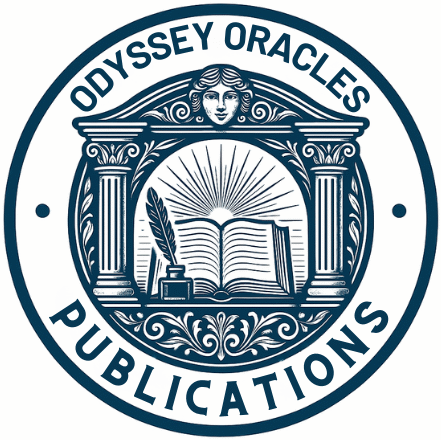Understanding ISBNs And Book Metadata

Introduction to ISBNs and Their Importance
ISBN. Those four letters hold a significant place in the literary world. So, what’s it all about? ISBN stands for International Standard Book Number. It’s like a unique fingerprint for books, giving each one a specific identity. Whether it’s a bestseller or a little-known treasure, every book sitting on a library shelf or a bookstore needs one of these to be truly seen.
These numbers are not just random digits. They’re the backbone of book creation and distribution. They help libraries and bookstores organize and track books efficiently, ensuring the right book gets to the right reader without a hitch. Imagine trying to navigate a giant book warehouse without some sort of ordering system. Absolute chaos, right? That’s what ISBNs help prevent.
ISBNs are vital tools for authors and publishers. They organize the book world and create legitimacy and professionalism for published works. With an ISBN, a book can be easily identified and found globally, opening doors to international markets and opportunities you might not have considered.
In today’s fast-paced book industry, understanding the true value of an ISBN is essential. It allows books to be registered, distributed, and sold through major retailers worldwide. So, whether you’re an aspiring author or a seasoned publisher, getting cozy with the concept of ISBNs is a smart move.
A Deep Dive into ISBN Structure
When you look at an ISBN, you might see just a string of numbers, but there’s more beneath the surface. Each section of an ISBN has a specific role. Think of it as a roadmap that tells you a lot about the book even before you crack it open.
The current ISBN-13 standard is sliced into five parts. These sections include the prefix (which usually kicks off with 978 or 979), the registration group element (which homes in on the book’s country or language area), the registrant element (an identifier for the publisher), the publication element (pinpointing the specific edition), and finally, a check digit at the end. Each part carries its weight in value, ensuring there’s no mix-up among millions of titles worldwide.
Back in the day, ISBNs had just 10 digits, but with the explosion of published works, things had to stretch out a bit to make space. This switch to a 13-digit system was vital to keep up with modern publishing and distribution demands, letting books be tracked more easily across international borders.
Understanding these parts can really empower anyone involved in book publishing. Whether you’re a novelist, a self-publishing whiz, or managing a small press, knowing how ISBNs work can save a lot of headaches and missteps. It’s not just about slapping a number on a book, but grasping how these digits work behind the scenes to keep the book world running smoothly.
Book Metadata Explained: More Than Just Data
When it comes to books, metadata isn’t just extra baggage—it’s the key to making a book easily found and understood in the digital and physical realms. Metadata includes the essential details about a book, like its title, author, publication date, and the all-important ISBN.
Dive deeper, and you’ll find even more goodies in metadata: the book’s genre, synopsis, price, and format details. All these pieces come together to paint a complete picture of a book’s identity. In the digital age, where millions of titles are floating around, having spot-on metadata can make a book stand out from the crowd.
Good metadata is a powerhouse for authors and publishers wanting to boost book discoverability and sales. Imagine a potential reader searching online for their next great read. Metadata is how search engines know which books to serve up in the results. This makes getting metadata right not just a nice-to-have, but a must-have!
Another perk of solid metadata is the way it enhances cataloging. Libraries, bookstores, and online retailers rely on accurate metadata to classify and store books. When metadata is set up correctly, books end up in the hands of the right readers as smoothly as possible.
So, zeroing in on quality metadata is smart if you’re publishing or selling books. It connects the dots between books and their potential audiences, ensuring that a book can reach as far and wide as possible.
The Interplay Between ISBNs and Metadata
When exploring the world of books, ISBNs and metadata are two sides of the same coin, working hand in hand to ensure smooth sailing from publisher to reader. The ISBN is the anchor that holds a book’s unique identity. At the same time, metadata provides the details that flesh out its profile.
Think of the ISBN as the key piece of metadata. It acts as a sturdy identifier, linking all the book’s information under one roof. This means that when a retailer or library scans a book’s ISBN, they’re not just seeing those digits—they’re pulling up a treasure trove of metadata that tells them precisely what they need to know about the book.
Harmonizing ISBNs with metadata takes a strategic approach. Ensuring that every piece of information is accurate and up-to-date is crucial for effective cataloging and distribution. This ensures that a book is exactly where it’s supposed to be, whether in a local library or among the top recommendations for an online reader.
This relationship between ISBNs and metadata can directly influence book sales and distribution potential for authors and publishers. A well-synced ISBN and metadata setup can lead to better bookstore and library placement and optimal online searchability. Ignoring this step is like trying to sell a book without a cover—challenging, to say the least.
It’s wise to regularly review and update metadata to leverage this interplay. Monitor market changes and ensure everything from your book’s summary to its genre tags reflects its true essence. With the ISBN firmly in place, the correct metadata can amplify a book’s reach.
Choosing the Right ISBN for Your Book
Picking an ISBN isn’t just grabbing any old number—it’s a decision requiring some thought. Different types of ISBNs cater to various publishing pathways, from traditional to self-publishing. Each option comes with its own perks that you might want to consider.
If you’re self-publishing, you often have the choice of owning your ISBN or using one provided by a publishing platform. Owning it means controlling how and where your book is distributed. At the same time, a platform-issued ISBN might come with distribution limitations on where that number can be used, meaning you need a different number to distribute elsewhere. The platform provides free ISBN numbers.
For those navigating the traditional publishing route, ISBNs are usually handled by the publishing house, freeing you up to focus on your writing. However, understanding your book’s unique number is still beneficial in tracking its journey post-publication.
Acquiring an ISBN is straightforward. In most regions, you can purchase one directly from the corresponding country’s official ISBN agency. Before doing so, though, consider whether you’ll need different ISBNs for different book formats—such as print, e-book, or audiobook. Each format requires its own ISBN, ensuring clarity across distribution channels.
Investing in the proper ISBN is a step toward ensuring that your book has the best chance at success. Properly assigned, it allows for seamless distribution and enhances your book’s potential market reach, connecting with readers seamlessly wherever they might be.
Optimizing Metadata for Enhanced Visibility
So, you’ve sorted your ISBN, but how do you ensure your book catches eyes in a crowded market? That’s where optimized metadata comes in. It’s all about making your book irresistible to both humans and search engines.
Crafting a compelling book title and description is the first step. These are often the first things potential readers notice, so they should be punchy and informative. While being catchy is key, they must reflect what the book’s really about, avoiding any misleading hype that could turn readers off.
Keywords are another piece of the puzzle. Done right, these bad boys boost your book’s visibility in search results. It’s tempting to cram in as many as possible, but remember, quality trumps quantity. Choose keywords that truly relate to your book’s themes and genre, striking a balance between popular search terms and niche phrases.
Ever heard of BISAC codes? These are like the secret sauce for proper categorization. They’re industry-standard codes that tell bookstores and libraries exactly which genre shelf your book belongs on. Picking the proper BISAC codes ensures that your book lands in front of the right audience, particularly when they’re browsing or searching by specific interests.
So, take the time to get your metadata right. The effort pays dividends in the form of discoverability and, ultimately, sales. Think of metadata optimization as the fine-tuning that helps your book not just live but thrive in the vast world of books.
The Global Landscape of ISBNs and Metadata
ISBNs may sound universal, but the world handles them in surprisingly varied ways. Each country has its own ISBN agency responsible for assigning these numbers. That’s why an ISBN from the U.S. looks slightly different from one from Japan or Germany. This system ensures each book’s identity is crystal clear, no matter where it travels.
When it comes to international book markets, ISBNs are key players. They act like passports, letting books cross borders with ease. A reader in Sydney can find the same book that was just launched in New York, thanks to ISBNs serving as the universal language among books.
Interestingly, some countries manage their ISBN distribution with unique twists. For example, some might include a local tax in the purchase. In contrast, others might have different rules for issuing them for free versus paid. Staying updated on these nuances is important if you plan to publish globally.
A few case studies highlight the effectiveness of robust ISBN management. Take Canada, which provides ISBNs at no direct cost and encourages broad participation in the ISBN system, boosting its authors’ worldwide presence. Or the UK, where meticulous use of ISBN-related metadata has helped maintain their titles’ prominence amid digital shifts.
There’s an inspiring lesson from all this: when ISBNs and metadata are well-coordinated, books can reach their fullest potential, unhindered by borders. It can increase sales, widen a book’s audience, and create lasting connections with readers in different corners of the globe.
Future Trends and Innovations in ISBNs and Book Metadata
The world of ISBNs and book metadata isn’t sitting still. Emerging tech trends are shaking things up, presenting new opportunities and challenges for authors, publishers, and readers alike. Among these changes, blockchain technology stands out. It’s creating secure, unalterable records, potentially reshaping how ISBN data and metadata are managed and tracked.
Digital books are leading the charge in changing ISBN dynamics. As e-books and audiobooks continue to rise in popularity, publishers are rethinking how ISBNs apply to non-physical formats. This might mean adjusting how multiple formats of a single title are registered and managed.
Metadata itself is seeing innovation with artificial intelligence stepping into the arena. AI technology can enhance how metadata is generated and updated, leading to more precise categorization and better-targeted reader recommendations. This shift can make metadata optimization quicker and more accurate, paving the way for books to be discovered by the right audience efficiently.
Looking ahead, developments in digital analytics are predicted to significantly impact bibliographic data. Authors and publishers will have more tools for assessing and tweaking metadata, helping books stay relevant in a competitive market. This insight can lead to smarter publishing strategies and, ultimately, greater success.
Staying ahead of these trends means embracing ongoing learning and adaptation. By keeping up with innovations in ISBNs and metadata, you’re not just playing catch-up—you’re setting the pace in the rapidly evolving book landscape. It’s about leveraging new tools and approaches to keep your books at the forefront of readers’ minds worldwide.






